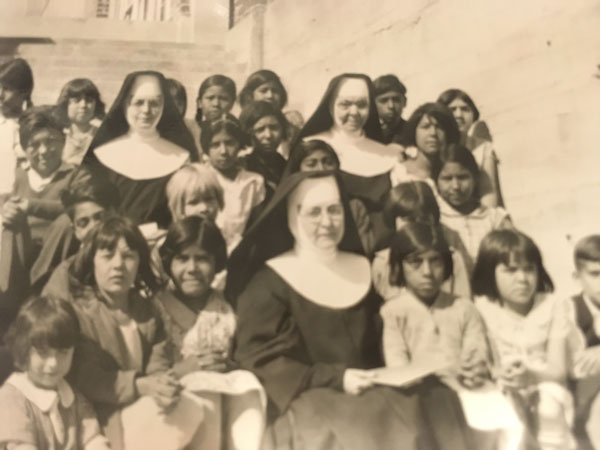
“Go into all the world
and preach the good news to all creation.” Mark 16:15
From May of 1931 until 1948, Sister Teresa taught Indian children at St. Mary’s Bengali Medium School for girls.
Now I’ll admit to a decidedly draconian view of childhood education in Catholic schools in the early years of the 20th century, here in the States that is. Jowly nuns nearly bursting out of their strait-jacket habits rule medieval classrooms by thumb-screws and other unthinkable persuasions.
I don’t know where those images come from – perhaps from my own Protestant (which is to say, anti-Catholic) boyhood. But maybe Louise Erdrich is to blame; the nuns in her novels reach out from between the covers and author evil in your own worst dreams.
Somehow it’s hard for me to think of little Sister Teresa, this diminutive young lady, barely more than a child, holding forth before an overcrowded classroom of little girls and being anything less than cherubic. Honestly, she couldn’t be draconian if she tried, right?
Who knows what little Sister Teresa might have been like as a teacher? Eventually the world came to esteem her greatly, not for creative lesson plans or cool classroom tricks, but because of her sacrificial rescue work among the world’s poorest and often abandoned little ones. Later on in her life, she wasn’t teaching multiplication tables, she was simply keeping otherwise wasted children alive.
But in her starchy black habit she stood before 17 successive classrooms of poor Indian children. We know how she saw her calling – or at least we know how she wanted others to think about how she saw her calling, her work. This is what she wrote to a Catholic magazine back home:
The heat of India is simply burning. When I walk around, it seems to me that fire is under my feet from which even my body is burning. When it is hardest, I console myself with the thought that souls are saved in this way and that dear Jesus suffered much more for them. . . . (18–19)Wasn’t easy.
And then she goes on, in a very general way, to describe her classroom in terms any teacher will understand. “The life of a missionary is not strewn with roses,” she says, “in fact more with thorns. . .” (19). Aha. Short attention spans likely annoyed her, as did vagrant eyes and minds, belligerence and boredom in her students. Most teachers feel such things at some time or another. I did. She had to know children whose out-of-the-classroom problems loomed so terribly before them that they simply couldn’t sit.
Think of her this way – she wiped noses, buttoned buttons, slapped hands that reached where they shouldn’t have. I bet she read more than her share of lousy assignments. Kids likely tangled in her class, hazed each other, made each other cry.
“[B]ut with it all,” she writes somewhat generically, “it is a life full of happiness and joy when she thinks that she is doing the same work which Jesus was doing when He was on earth, and that she is fulfilling Jesus’ commandment: ‘Go and teach all nations!’” (19).
Funny, even after forty years in the classroom, I always thought Jesus’s departing command was not to teach but to preach. But then, I’m Protestant, and I’m not a woman whose vows to be the bride of Christ gave her a very clear and cozy sense of mission in the classroom.
Maybe I’ve been wrong. No matter. Even though I’ve been a teacher for forty years, I can still learn.
And Mother Teresa, long after she quit and long after she died, can still teach.
All nations, too.
No comments:
Post a Comment